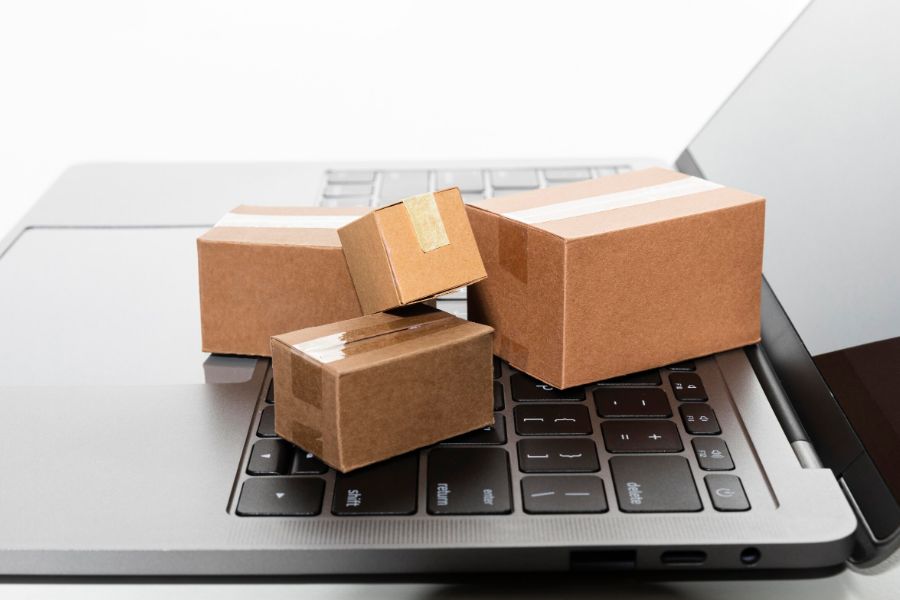Retail distribution is getting goods from manufacturers and producers to consumers. It involves various intermediaries such as wholesalers, vendors, and retailers, and different channels such as online and offline. In this blog post, we will explain what a retail distribution strategy is, why it is important, how to pick the best channels for your business, how to establish strategic partnerships, and how to use data and analytics to optimize your distribution.
What is a retail distribution strategy and why is it important?
Definition of a retail distribution strategy
A retail distribution strategy is the plan that defines how you will deliver your products or services to your customers. It includes the following elements:
- The type and number of intermediaries you will use, such as agents, wholesalers, distributors, or retailers.
- The type and number of channels you will use, such as online, offline, direct, or indirect.
- The level of distribution intensity you will adopt, such as exclusive, selective, or intensive.
- The pricing and promotion strategies you will apply to each channel and intermediary.
Benefits of a retail distribution strategy
A retail distribution strategy is important because it affects your sales volume, market share, customer satisfaction, brand image, and profitability. A good distribution of goods or services to consumers can help you:
- Reach more potential customers and increase your market coverage.
- Reduce your distribution costs and improve your margins.
- Enhance your customer service and loyalty.
- Differentiate your brand from your competitors.
- Adapt to changing customer preferences and market conditions.
How to pick the best retail distribution channels for your business
Factors to consider when choosing retail distribution channels
There is no one-size-fits-all solution for choosing the best retail delivery channels for your business. You need to consider several factors, such as:
- Your target market: Who are your customers? Where are they located? How do they shop? What are their needs and expectations?
- Your product or service: What are the features and benefits of your product or service? How does it compare to your competitors? How does it fit into your customers’ lifestyles?
- Your resources and capabilities: How much capital, time, and expertise do you have to invest in your distribution? What are your strengths and weaknesses? How can you leverage your core competencies?
- Your objectives and goals: What are your short-term and long-term goals? How do you measure your success? What are the trade-offs between different channels?
Types of retail distribution channels and examples
Based on these factors, you can choose from different types of retail supply chain channels, such as:
- Direct-to-consumer (DTC): This is when you sell directly to your customers without any intermediaries. You can use platforms like your website, social media, or marketplaces like Amazon or eBay. You can also use offline methods such as pop-up stores, vending machines, or direct mail. DTC channels can help you control your brand image, pricing, and customer relationship. However, they can also require more investment in marketing, logistics, and customer service.
- Resellers: These are intermediaries who buy your products or services and resell them to their customers. They can be online or offline retailers who have their stores or websites. They can also be agents or brokers who act as middlemen between you and other retailers or distributors. Resellers can help you expand your market reach, reduce your distribution costs, and leverage their expertise and reputation. However, they can also reduce your profit margin, limit your control over pricing and promotion, and create channel conflicts.
- Wholesalers: These are intermediaries who buy your products or services in bulk and sell them to other intermediaries such as retailers or distributors. They can offer economies of scale, lower inventory costs, and faster delivery times. However, they can also reduce your profit margin, limit your control over pricing and promotion, and create channel conflicts.
How to establish strategic partnerships for your retail distribution
Benefits of strategic partnerships for retail distribution
Strategic partnerships are long-term relationships between two or more parties who share common goals and values. They can help you improve your retail delivery by:
- Providing access to new markets, customers, channels, or technologies.
- Enhancing your competitive advantage by combining resources, capabilities, or expertise.
- Reducing risks by sharing costs, responsibilities, or liabilities.
- Creating value by offering complementary products or services.
Tips for finding and managing strategic partners for retail distribution
To establish strategic partnerships for your retail delivery, you need to:
- Identify potential partners with compatible goals, values, cultures, and capabilities.
- Evaluate the benefits and costs of partnering with each potential partner.
- Negotiate the terms and conditions of the partnership agreement.
- Implement the partnership plan by aligning processes, systems, and people.
- Monitor and evaluate the partnership performance by setting metrics and feedback mechanisms.
How to use data and analytics to optimize your retail distribution
Benefits of data and analytics for retail distribution
Data and analytics are essential tools for optimizing your selling to the public. They can help you:
- Understand your customers’ behavior, preferences, needs, and expectations.
- Segment your customers into different groups based on their characteristics or values.
- Personalize your products or services to match each customer’s needs or wants.
- Target your customers with relevant offers or promotions at the right time and place.
- Measure and improve your customer satisfaction and loyalty.
Tools and techniques for data and analytics for retail distribution
To use data and analytics to optimize your retail supply chain, you need to:
- Collect and integrate data from various sources, such as sales, inventory, pricing, marketing, or customer feedback.
- Analyze and interpret the data using statistical methods, machine learning algorithms, or predictive models.
- Visualize and communicate the insights using dashboards, reports, or stories.
- Act on the insights by implementing changes, testing results, or making decisions.
Conclusion
Retail distribution is a key factor for your business success. By designing a winning retail delivery strategy, you can reach more customers, increase your sales, enhance your brand image, and improve your profitability. To do so, you must consider your target market, product or service, resources and capabilities, objectives and goals, and choose the best channels for your business. You also need to establish strategic partnerships with other parties who can help you improve your distribution. You need to use data and analytics to optimize your distribution by understanding and satisfying your customers’ needs.
If you need help with your retail supply chain strategy, contact us today. We are ConnectPOS, a leading provider of cloud-based POS (point-of-sale) solutions for omnichannel retail. We can help you integrate your online and offline channels, manage your inventory and orders, offer flexible payment options, and provide a seamless customer experience.
ConnectPOS is a all-in-one point of sale solution tailored to meet your eCommerce POS needs, streamline business operations, boost sales, and enhance customer experience in diverse industries. We offer custom POS with features, pricing, and plans to suit your unique business requirements.




